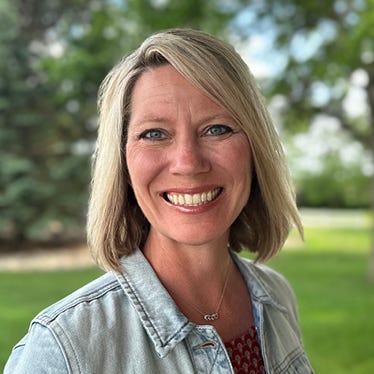July 2, 2024

At a Glance
- The Elliots moved their dairy operation from Northern Ireland to Lake Norden, S.D., in 2006 to expand their dairy.
- Drumgoon Dairy works with local farmers to procure forage, with a focus on benefiting their community.
- The dairy’s milk goes to local plants in Milbank and Lake Norden, which produce various dairy products.
Agriculture is more than a business; it’s a way of life, according to one dairyman from South Dakota.
“If you say agriculture is just a business, it’s not really a fair statement. Agriculture is about a certain way of living and a certain way of valuing things. To just sum it up in a financial statement or a price per bushel isn’t fair,” says David Elliott, operations manager at Drumgoon Dairy, a family-owned dairy near Lake Norden, S.D.
In 2006, at age 14, Elliot immigrated to South Dakota from Northern Ireland with his parents, Rodney and Dorothy, and his siblings.
“Drumgoon Dairy is named after our farm in Ireland. My dad started dairy farming in a tiestall barn at 16 in 1980 with 20 cows. I started helping him in the ’90s at 6 years old,” Elliott says.
The family decided to make the move to the United States to be able to run a larger dairy operation. “Dad got approached in 2004 to go on a tour in South Dakota,” Elliot says. “He was thinking he wanted to expand his dairy operation because we were limited in size and scale with supply management, quota system and more EU regulations.
“Our property in Northern Ireland was entirely surrounded by a river so it wasn’t geographically a place that you could get much bigger. We toured this area near Lake Norden as a family in 2005 and then purchased land and the site for a dairy and house. We sold our dairy farm and home to my uncle and aunt in Northern Ireland, and we came here in February 2006.”
“We initially started with 160 acres of land and 1,400 cows at the end of 2007,” Elliott says. “We expanded in 2008 — then again in 2013, 2014, 2016, 2017, 2020 and now are building a 5,000-cow dairy in conjunction with another dairy family.”
Drumgoon Dairy today has 6,500 milking cows. In the last 18 years, the Elliotts have expanded to a multi-barn site and 2,200 acres. The area consists of three separate dairies: two conventionally milked and the most recent addition of a 1,500-cow robotics dairy. In addition, the Elliotts invested in a 70,000-heifer site in Kansas with expansion plans.
The dairy milks around the clock, with cows being milked three times a day.
“But following a schedule is less important than consistency,” Elliott says. “We milk about 2.5 to 2.7 times a day and average 22 hours of milking with two hours washing the system. Our cows get milked roughly every eight to 10 hours. The variation comes from the barn capacity, parlor capacity, and lactation stage. We milk cows in Norden three times a day as they have large amounts of milk early in the lactation. Drumgoon is pregnant cows who milk less, and we can milk them around 2.5 to 2.7 times a day.”
Employee influence
Elliot calls the Drumgoon a family dairy, but credits their employees such as farm manager Andrew Weber as a major influence in their success. Weber, who joined the dairy in 2016, is one of 60 employees at Drumgoon.
“People want to do better every day and take pride in their jobs. The drive can come from someone having a dream. Our family loves dairy farming, and my dad has definitely always pushed to be a dairy farmer in America. My mom does the bill entry and payment, along with human resources and management of employee housing for the farm,” Elliot says. “Finding balance and finding compromise is how you make it work. But the people who have got us here along the way are just as important in their contribution. There are a lot of people that have found solutions for us, and we’ve given them a platform to do that.”
Elliott says growing up in a dairy family brings a lot of motivation. “What gets me up in the morning is providing for my family, providing for my kids and putting the work in. But also the challenge. Waking up, you know there will be some sort of challenge that day. There will be something that will show up. And sometimes the phone call comes a little early,” Elliott says with a chuckle.
Community-minded
The economics of dairy farming is not just the milk you get out of it, but also the feed you have to put into it.
“Rough economics of a dairy farm is that you’re going to spend half your revenue on feed,” Elliott says. “It’s not just the milk. It’s how you get to the milk. Feed is a great place to start when you’re talking about community because forage production happens locally. It’s very expensive to haul forage further than you need to, so you price the local farmers more. We work with maybe two dozen local farmers of varying sizes to source forage.”
According to Elliott, a lot of the future of the dairy industry and agriculture will rely on using the byproducts of production, such as cow manure, to grow healthy crops.
“You have to get the raw inputs to as high a quality as possible. Our nutrient management plan is close to 14,000 acres, with permission from the state and landowner, and [we] rotate through those fields as much as we can. You can put manure on your field every year at a managed rate, but it still won’t meet all the nutrient requirements for your corn,” he explains.
Consistency counts in regard to application. As more applications are made, the nutrients will continue to be more available for the plant.
And Elliot offers another benefit” “It’s also feeding the microorganisms in the soil and improving soil health, which correlates with a higher nutrient density in our forage crops.”
“For every dollar invested, a dairy cow will replicate that dollar six times in your community,” Elliott says. “When you look at growing crops, and you reduce it to the raw inputs, if you are growing crops with locally sourced manure and selling crops to local dairy farms, you are keeping a higher percentage of those dollars in the local community in comparison to grain that is sold for export overseas.”
Focused on animal health
The Drumgoon Dairy milk goes to plants locally in Milbank, S.D., and nearby Lake Norden, both of which produce a variety of products and cheeses.
“We’re not typically a Holstein herd. We have a bit of everything with some cross-bred influence in our cows, like Jersey and Swedish Red. These animals calf well, have good health [and] work for our system. That influences our milk production,” Elliott says.

MIXED HERD: The dairy cattle at Drumgoon consist of more than the classic black-and-white Holsteins. Instead, their herd has cross-bred influence from Jerseys and Swedish Red cattle, which the Elliotts have found create animals that calve well, have good health and work for their dairy.
The dairy is at a 75-pound herd average. “But we have a lot more fat percentage in our milk. Because of genetics from previous years, we’re still catching up on production,” Elliot says. “But I think there’s a point to the longevity of the cow, the health of the cow and the profitability of the cow. Production is just one metric in that. When you are summarizing your farm, you list your production per day. I would say that’s not the most important number.”
Drumgoon Dairy does not use antibiotics in their protocols. “We use antibiotics only as a treatment as determined by our farm manager,” Elliott says. “The cows get an ear tag with the drug and date that was administered. This lets us know when they can get back into the meat withhold for culling, or milk withhold for getting back into the milk stream.”
The Elliots view a bright future for the dairy. “The reality about farming in a rural area is that it can be a lonely place. For us, this dairy is like a mini-village,” Elliott says.
“I think there’s a lot to be said about working with people versus working alone. That is the evolution of the farm. If everyone shares a load, it’s not such a burden because we all have the same goal. If you’ve worked with dairy cows long enough, the cow is going to get you where you need to go. There’s no shortcuts there.”
To follow Drumgoon Dairy, visit Drumgoon Dairy on Facebook.

TECH-FORWARD: Embracing technology since their arrival to South Dakota in 2006, tech has been the most significant transformation on the dairy. Here, Elliott showcases the farm’s robotic milking system, just one piece of technology that impacts the farm.
Embracing technology on the dairy
The Elliotts have always embraced technology. Since their move in 2006, technology has been the most significant transformation on the dairy. “Our strategy is to try new things and be innovators instead of followers,” David Elliott says.
“We were one of the first herds, to my knowledge, that did the electronic breeding collars and activity monitors when they first came out in 2012. Because of the collar results, we saw that our pregnancy rates got better, which is important in dairy cows because you insulate yourself from having to outsource your inputs, which can be volatile.”
According to Elliott, replacement cows and replacement heifers can be unpredictable. “When you consistently raise your own heifers and do it well, you have fewer health issues because you’re not bringing new problems into your herd.
Drumgoon Dairy monitors key performance metrics with an online software portal called My Dairy Dashboard, which combines data to achieve the dairy’s current and future goals.
“Good data is the challenge,” Elliott says. “This online farm dashboard replaced me having to maintain a lot of spreadsheets. I like data-focused decisions. For agriculture, nothing is a straight line.”

BLACK GOLD: Drumgoon is home to an on-site methane digester developed with Dynamic Renewables, which allows for more storage and consistent production of digestate, ready to apply to local fields.
Drumgoon is also host to an on-site methane digester developed with Dynamic Renewables. This production facility has the ability to produce renewable natural gas. The project compliance falls under the South Dakota Department of Natural Resources.
The dairy site has three separate lagoon systems: one system for robots and one for each of the two conventional barns. “But now that we have the digester, they have pumps that all work together,” describes Elliott.
“Because they are tied together, there is more storage, and there is an engineered degree of separation from the slope screens in the digester. Rather than raw manure, we have digestate [manure post-digester] that due to the heat of the digester is free of any potential to carry weeds onto the field during application. It is a more consistent product that requires less agitation compared to raw manure, which formed a crust in our ponds.”
About the Author(s)
You May Also Like



.jpg?width=700&auto=webp&quality=80&disable=upscale)


